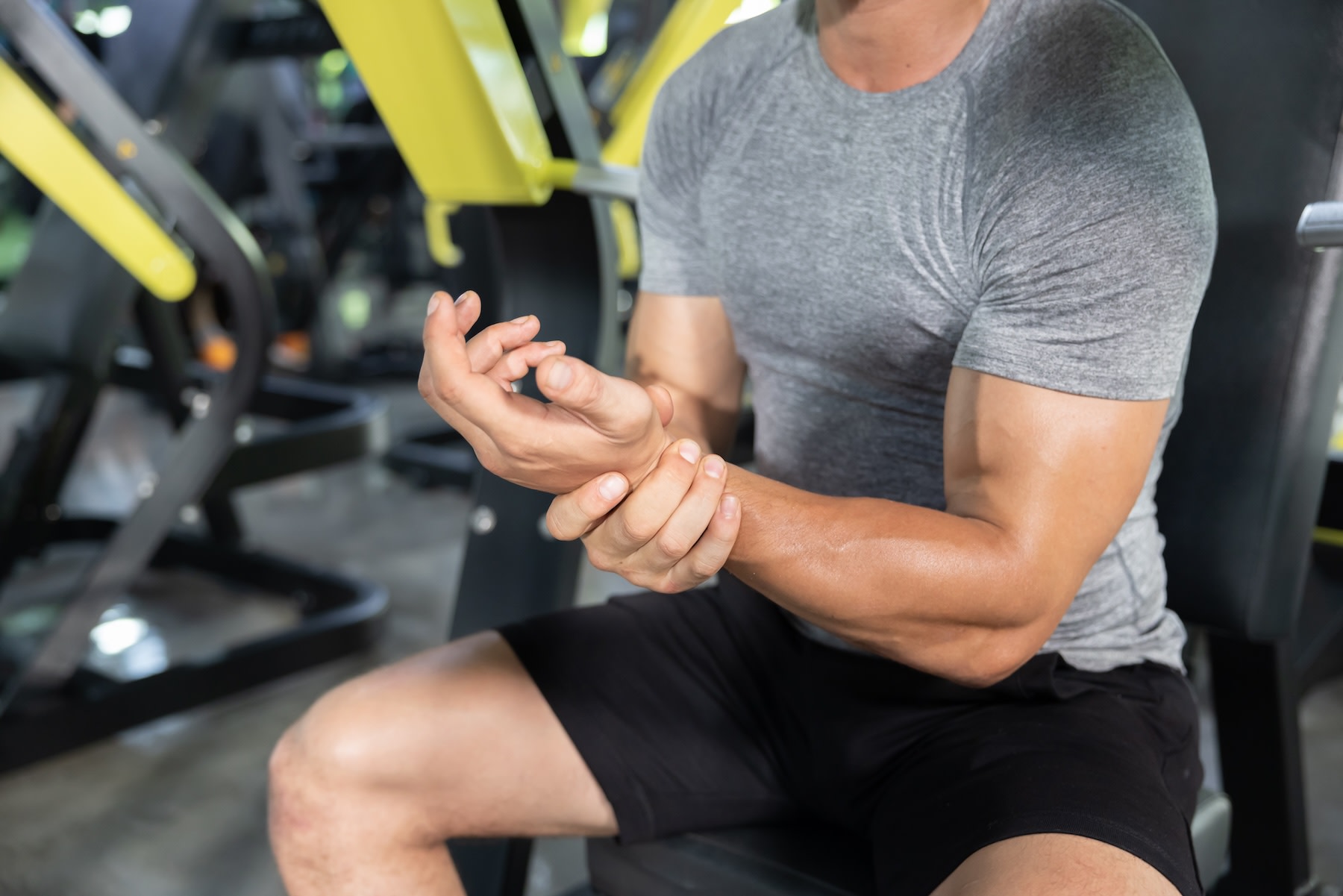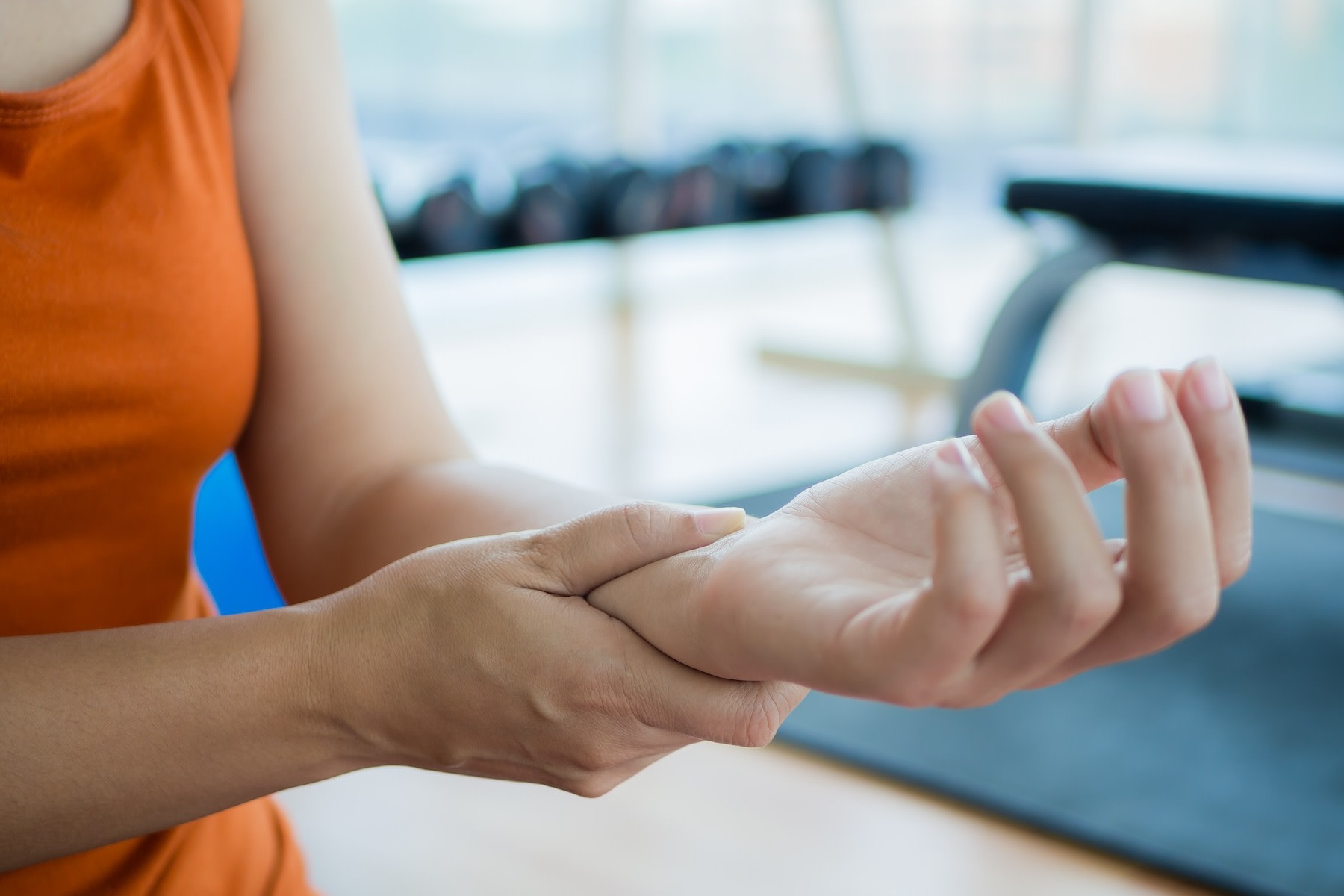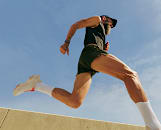
charnsitr / iStock / Getty Images Plus via Getty Images
If Weight Lifting Leaves You with Sore Wrists, Read This
Wrist pain from lifting weights is common if you’re not using proper form, especially when you’re lifting heavy.
By Sarah Klein•
Common Causes of Wrist Pain from Weight Lifting
How to Prevent Wrist Pain from Lifting Weights
How Long Might Wrist Pain from Weight Lifting Last?
When to Speak with a Healthcare Provider About Wrist Pain
The Takeaway
Weight lifting often focuses on big movements and big muscles, like deadlifting to build your glutes and hamstrings. But little details, like tiny form tweaks, can often make all the difference, and smaller muscles and joints can’t be ignored. That’s very obviously the case if you find yourself dealing with wrist pain from weight lifting.
Discover more ways to reach your goals with Peloton
“The wrist is a more delicate joint compared to some of the other weight-bearing joints, like our hips or knees,” says physical therapist Lori Diamos, founder of Pearls from a PT. If you’re not careful about how you’re treating your delicate wrists, then discomfort, pain, or other symptoms may be more noticeable than in other joints, she says.
If your wrists hurt, not only do you want the pain to stop for your own comfort, you also don’t want it to get in the way of your progress. “Proper wrist form and good wrist strength is incredibly important for strength training,” says Peloton instructor Ben Alldis. “Having a strong grip provides you with more stability and control when lifting, reduces your risk of injury, and contributes to an improvement in your overall performance by allowing you to lift heavier weights safely.”
Keep reading to learn everything you need to know about weight lifting and wrist pain.
Common Causes of Wrist Pain from Weight Lifting
In case it’s any comfort, Ben himself is no stranger to sore wrists from strength training. “I’ve experienced wrist pain across the years, and I know firsthand how frustrating it can be,” he says. “When it happened to me, it was mainly due to overtraining and me trying to lift weights that were too heavy for my strength level at the time. I wasn’t spending the time to properly warm up and hadn’t spent time building the foundational strength in my forearms and wrists before going super heavy on particular lifts.”
Wrist pain from lifting weights is relatively common in Diamos’s practice, too, “especially for people transitioning back to working out who haven’t done it as regularly,” she says.
Here are the major causes of wrist pain from weight lifting to be aware of.
1. Weak Wrist or Grip Strength
Your discomfort could be coming from the fact that your wrists or forearms simply aren’t strong enough (yet!) for what you’re asking them to do. “When we add load to something that’s already not moving properly or has a little bit of weakness, it flares things up,” Diamos says.
“Often, people will increase the weights they are using before properly building up the grip strength to support the increased load,” Ben adds. “This can put additional pressure on the joints and lead to wrist pain and injury over time.”
2. Overuse Injuries
If you’re doing too many exercises that place a lot of strain on your wrists without enough recovery, you might end up with an overuse injury or repetitive strain, Ben says.
3. Improper Form
“Incorrect wrist angles during movements like bench presses, push-ups, or curls can often put pressure on joints that can lead to injuries over time,” Ben says.
Similarly, gripping barbells or other equipment in the wrong position or with too much or uneven pressure can hurt. Improper grip mechanics “put more strain on different tendons or ligaments,” Diamos says.
4. Skipping a Warm-Up
If you don’t spend enough (or any) time on wrist mobility and warming up before strength training, the muscles in your arms will be tighter and you could be more prone to wrist pain and injuries, Ben says.
5. Using Too Much Weight
Reaching for weights that are too heavy, too soon for specific exercises can also lead to wrist pain and injury, Ben says.
If the weights you’re using are too heavy for your wrist, forearm, or grip strength to safely handle, you’ll compensate with other muscles or joints, Diamos says. This kind of compensation in turn compromises your joint mechanics, “and the increased stress and strain start having a wear-and-tear effect over time,” she says.
6. Previous Injuries and Underlying Conditions
Your wrist pain may be flaring up from an old injury that isn’t fully healed, such as a fracture or a sprain, or a condition like tendonitis or carpal tunnel syndrome that can affect the wrists, Diamos says.
“Training through the pain without seeking professional help can lead to long-term injury and damage to your wrists,” Ben warns.
How to Prevent Wrist Pain from Lifting Weights
Try not to feel discouraged by that long list of causes. There are many effective ways to ward off wrist pain from weight lifting.
1. Prioritize Grip Strength and Stability
Don’t ignore your wrists in favor of more “glamorous” body parts. “Integrate exercises like wrist curls, grip strength exercises, and forearm stretches into your routine to improve your wrist stability and strength and reduce the chance of injury over time,” Ben says.
You can find plenty of wrist mobility routines, upper body stretches, and even yoga flows focused on the wrists on the Peloton App.
Give Your Wrists Some Love with a Guided Class
2. Warm up Properly
Yes, that means before every workout. “Spend time going through mobility exercises for wrists and forearms,” Ben says.
A full body dynamic warm-up before a strength workout will get your wrist joints moving and also prime the surrounding muscles to better handle the load to come, Diamos says. The Peloton App has lots of quick warm-up routines to follow along with.
3. Perfect Your Form
Make sure you’re using proper form for all the exercises you’re doing, Ben says. This includes “keeping your wrists in a neutral position to begin with and avoiding overextending or bending your wrists during exercises,” he says. Make sure not to use a grip that’s too wide, either.
This can be a relatively simple fix for wrist pain from lifting. “Cleaning up the mechanics is the secret sauce for a lot of people,” Diamos says. “They don’t realize they're doing something wrong or they’re in the wrong position.”
4. Lower the Weight or Modify Exercises
If you’re having a hard time maintaining a neutral wrist position or any other key component of proper exercise form, you might want to reduce the amount of weight you’re lifting and/or modify the exercise so you can make sure you’re performing it safely, Ben says.
This is a good strategy for preventing wrist pain from weight lifting, but also for addressing it in the moment. “If I felt pain during a session, I would stop doing the exercise that was making it hurt and swap it out for an exercise that would allow for a more neutral grip positioning,” he says of his own wrist pain from weight lifting.
When he’s instructing strength classes, Ben encourages folks dealing with wrist pain to stop immediately “if the pain is sharp or if it feels unstable, as that could be a sign of injury,” he says. If they experience discomfort more than worrisome pain, he may offer some form tweaks or modifications.
If you’re dealing with sore wrists while doing bodyweight strength exercises like planks and push-ups, there are some helpful modifications you can make too, Diamos says. She suggests balancing on your fists instead of your palms in these positions if your wrists hurt. You can also do planks and push-ups holding dumbbells. All of these tweaks keep your wrists in a neutral position that can be more comfortable, she says.
5. Get Some Gear
You don’t want to rely too much on wrist support or you may end up compromising your own strength gains. But supportive wrist straps during heavy lifts can help prevent or ease some discomfort, Ben says.
Straps or compression gloves also provide a little more stability “so [you] can maintain better mechanics when [you] lift,” Diamos adds.
6. Build up Slowly
If you’re new to strength training or getting back into weight lifting after some time off, progress gradually and allow yourself plenty of rest to limit your chance of pain and injury.
“When reintroducing challenging exercises to my training routine, I focused on form and technique over weight to begin with and spent time building back up to heavier loads,” Ben says. “It’s important to increase weight gradually so your wrists and forearms can adjust to the strain over time. Building a solid foundation of stability in your wrists and forearms is important before you start loading too heavy.”
7. Switch Your Grip
Your wrist pain could be due to how you’re holding your weights. “Learning to use grip variations allows you to reduce strain when needed,” Ben says. Different hand positioning could reduce pressure on your wrists.
If you always reach for barbells, you can also experiment with dumbbells or kettlebells to see if that feels more comfortable, Ben suggests.

spukkato / iStock / Getty Images Plus via Getty Images
How Long Might Wrist Pain from Weight Lifting Last?
It’s understandable that you want to get back to training as soon as possible with less pain. But you don’t want to rush the healing process if something serious is going on with your wrists.
It’s tricky to estimate how long wrist pain from weight lifting will last because that really depends on what the cause is. The first steps are all about adjusting the simplest potential causes: checking your form, fixing your mechanics, and scaling back on weight if needed. If that was all you needed to do, you might notice some improvement within two to four weeks, Diamos says. Stick to perfect form and mechanics, and she estimates you’ll feel a lot better by four to eight weeks.
If the pain isn’t getting better after those first two weeks, “that’s the red flag to seek out a doctor, physical therapist, or other movement expert to be sure something else underlying isn't really happening,” she says.
Related Articles

Strength Train
How Switching Your Grip Can Make an Old Move Feel New Again

Stretching + Mobility
5 Reasons You Should Be Stretching Your Wrists

Strength Train
Grip Strength Isn’t Just For Pull-Ups—Here’s Why You Need It, Plus the Best Grip Strength Exercises to Try

Strength Train
7 Forearm Exercises for Stronger Arms and Better Grip Strength
When to Speak with a Healthcare Provider About Wrist Pain
It’s never a bad idea to discuss your wrist pain with a trusted healthcare provider, especially if it’s affecting your exercise routine.
But there are a handful of signs you really shouldn’t ignore, Ben says, including:
Pain that doesn’t improve or gets worse, even with rest
Numbness or tingling
Difficulty moving the wrist
Swelling, bruising, or heat in the wrist that doesn’t improve
Severe pain that affects your ability to do everyday tasks
Pain that comes back every time you lift weights
“During the worst period of my wrist pain, I worked with a physiotherapist who helped me assess the issue, built out a list of tailored exercises I could use to improve my grip strength, and also conducted regular manual therapy to the area to reduce the pain,” Ben says. “Over time, this helped me improve function and prevent future problems from occurring.”
The Takeaway
Wrist pain from weight lifting is often due to improper form; weak wrist, forearm, or grip strength; or progressing to too-heavy weights too quickly. Adjusting your mechanics and scaling back on weight can often help ease the pain within two to eight weeks. But underlying injuries and conditions like strains and tendonitis can cause pain to linger for longer. Always discuss wrist pain that doesn’t improve or comes with numbness or tingling with a healthcare professional.

Peloton App
Access thousands of classes with no equipment needed.
This content is for informational and educational purposes only and does not constitute individualized advice. It is not intended to replace professional medical evaluation, diagnosis, or treatment. Seek the advice of your physician for questions you may have regarding your health or a medical condition. If you are having a medical emergency, call your physician or 911 immediately.
Get our latest health stories straight to your inbox
Enter your email to get articles, expert-backed tips, and updates from Peloton sent to your inbox.
By providing your email address, you agree to receive marketing communications from Peloton.
For more about how we use your information, see our Privacy Policy.









